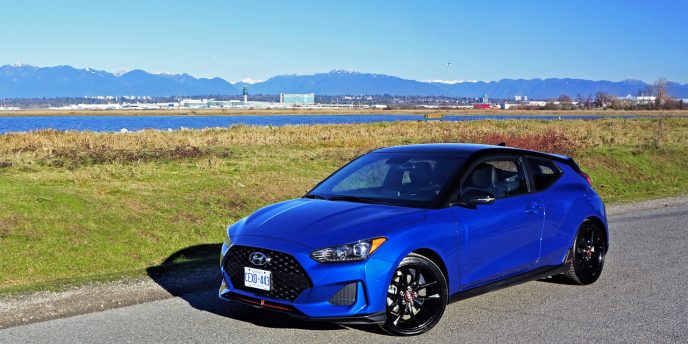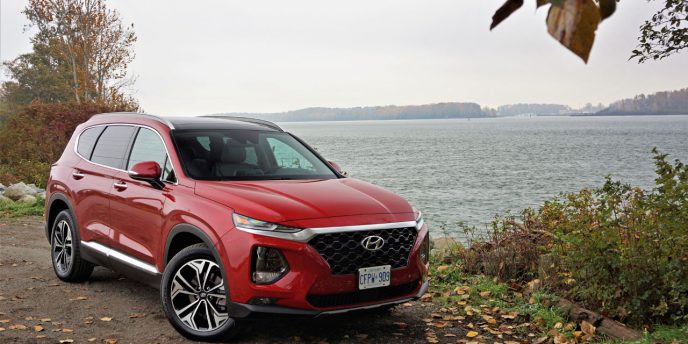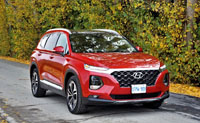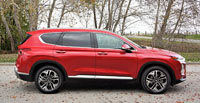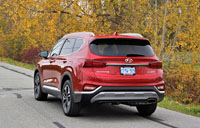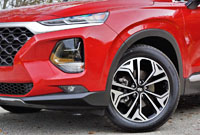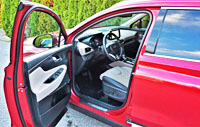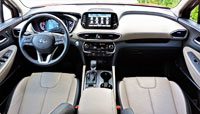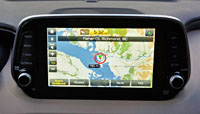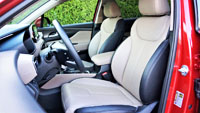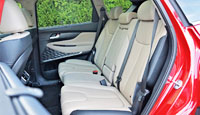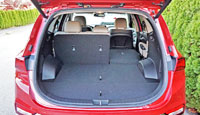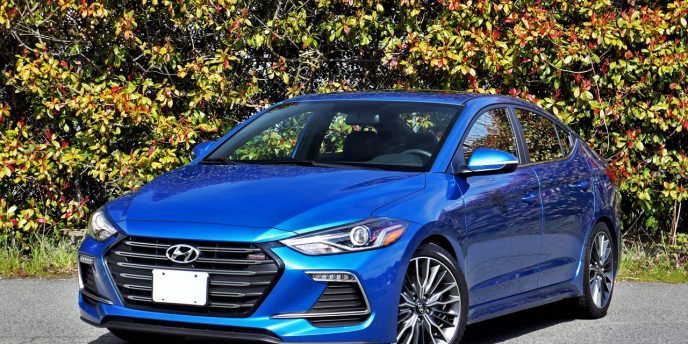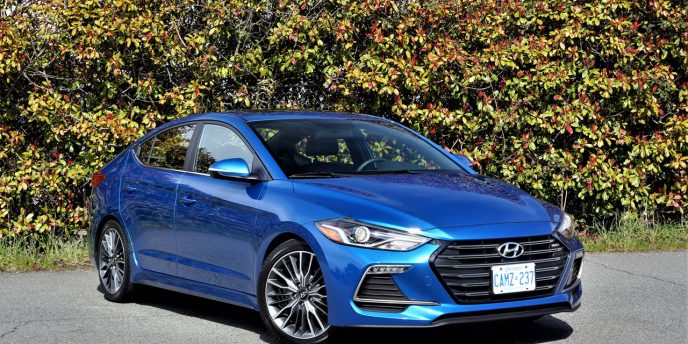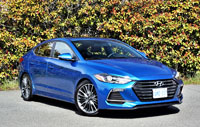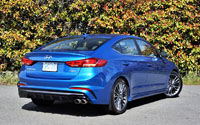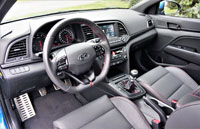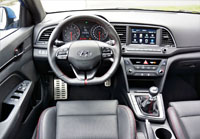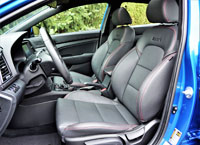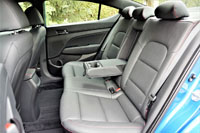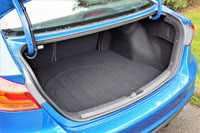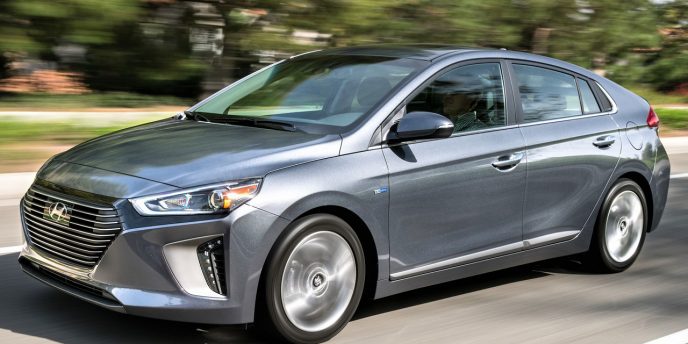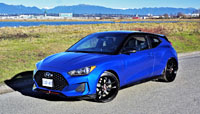
With the Genesis Coupe now long gone, and Genesis itself becoming a standalone luxury brand, this completely redesigned 2019 Veloster becomes the only dedicated sports model in Hyundai’s lineup.
That’s a pretty heavy weight for this little front-drive compact to carry, but it continues to walk with a swagger of confidence thanks to truly unique styling that preserves the original model’s unorthodox hatchback shape and its most identifiable feature, the long driver’s door that makes it look like a regular sports coupe from one side, and the extra rear passenger’s side door that allows easier access to the back seats.
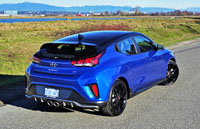
Yet there’s no way you’ll mistake the Veloster for a compact sedan or even a regular hatchback when one whizzes by, its third door sneakily hiding its handle in the rearmost section of the side glass surround as if doubling as a tiny quarter window, while the car’s general shape is much longer, lower and leaner, and its rear liftback design much more vertical and dramatically styled than the average compact commuter car.
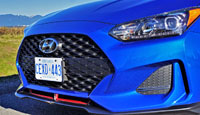
Of course, other than providing plenty of room up front and a fairly accommodating rear passenger compartment the Veloster is anything but the compact class average, yet its much more practical design makes it one of the more pragmatic choices amongst compact sports coupes, albeit this list has been dwindling in recent years and now disparate at best with only the Honda Civic Coupe available in three regular trims plus the sportier Si, plus the rear-wheel drive Subaru BRZ and Toyota 86 twins, and finally the soon to be discontinued VW Beetle. Certainly there are other sporty four- and five-door compacts from the legendary VW GTI/Golf R and Subaru WRX/STI to Ford’s Fiesta and Focus ST and RS models, the latter blue ovals already slated for cancellation, while a handful of mainstream volume brands still off larger performance cars, but the days of compact sport coupes seem numbered.
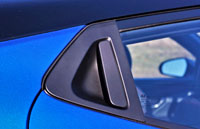
Reason enough for the Veloster to break the rules with its three-door body style (or four-door if you include the hatch), but rest assured its underpinnings are comparatively straightforward. It comes standard with a 2.0-litre base four-cylinder engine good for 147 horsepower and 132 lb-ft of torque, which drives the front wheels through a standard six-speed manual or optional six-speed automatic, whereas the Veloster Turbo model in our garage this week is 400 cubic centimetres smaller a just 1.6 litres yet puts out a much more energetic 201 horsepower and 195 lb-ft of torque. It still drives the front wheels through a standard six-speed manual gearbox, but those wanting automation can option up to a quick-shifting seven-speed dual-clutch gearbox with paddle shifters on the steering wheel.
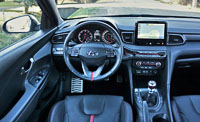
Our tester includes the manual as we’d prefer if it were staying with us longer than a week, plus it also gets a $3,000 available Turbo Tech package featuring a powered head-up display system with a Sport mode function, rain-sensing wipers, rear parking sensors, automatic climate control with an auto defogger, a larger 8.0-inch infotainment touchscreen with integrated navigation, eight-speaker Infinity audio with an external amplifier, leather upholstery, and two-way powered driver seat lumbar support.
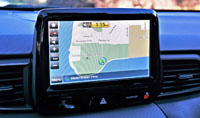
Another $500 provides an upgrade to the Performance package that adds unique 18-inch alloy wheels on 225/40 Michelin Pilot summer-performance tires, while all of the above was added to a Veloster Turbo that already comes standard with LED headlights, LED side mirror turn signal repeaters, LED taillights, a unique grille and extended side sills, proximity-sensing keyless access with pushbutton ignition, a 4.2-inch TFT multi-information display replacing a more conventional 3.5-inch trip computer within the gauge cluster, a powered glass sunroof, silver vent rings, checkered dash trim, partial cloth/leather upholstery with red stitching instead of blue, leatherette door trim, red interior accents, and more.
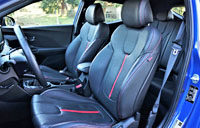
Of course, Turbo trim pulls up plenty of features from the base model mentioned earlier, including auto on/off headlights, LED daytime running lights, power-adjustable heated side mirrors, remote entry, a leather-wrapped heatable multifunction steering wheel, a tilt and telescopic steering column, cruise control, power windows, illuminated vanity mirrors, a sunglasses holder, filtered air conditioning, a one-inch smaller 7.0-inch infotainment touchscreen with standard Apple CarPlay and Android Auto, a rearview camera with dynamic guidelines, six-speaker audio, Bluetooth hands-free phone connectivity with audio streaming, a leather-wrapped shift knob, heated front seats, manual six-way driver and four-way front passenger seat adjustments, blindspot detection with rear cross-traffic alert, all the expected active and passive safety features, plus more.
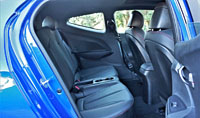
Before moving on from trims and features, Hyundai now offers the even more capable Veloster N for 2019, boasting a 2.0-litre turbocharged four-cylinder good for a meaty 275 horsepower and 260 lb-ft of torque. It comes standard with a six-speed manual transmission featuring downshift rev-matching, an electronically controlled limited slip differential for getting power down to the road, an electronically controlled suspension attached to unique 19-inch alloy wheels on 235/35 Pirelli summer-performance tires for maximizing lateral grip, Normal, Sport, N and Custom drive mode selections, a driver-adjustable active exhaust system, and more.
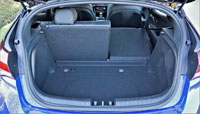
This $34,999 model gets unique styling details including some red paintwork along its lower extremities and the option of Chalk White, Phantom Black and exclusive Performance Blue (more of a baby blue) exterior colours, plus inside it features blue-stitched N exclusive cloth sport seats and other upgrades.
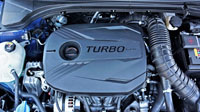
Base Veloster and Veloster Turbo trims are much more affordable, the former starting at just $20,999 plus freight and fees, and the latter for only $25,899. You can add the conventional automatic to the base model for another $1,300, whereas the more performance-oriented dual-clutch automated gearbox ups the Turbo’s price by $1,500. This meant my almost fully featured test model came to $29,399, just shy of a fully loaded Veloster Turbo Tech DCT’s $30,399 list price. To get full 2019 Veloster pricing details include models, trims and options, not to mention detailed rebate info and dealer invoice pricing that could save you thousands, make sure to check out CarCostCanada.
A standard 2019 Veloster upgrade that deserves the most attention of all is a change from a torsion beam rear suspension design to a new independent multi-link setup, which should theoretically improve comfort as well as high-speed stability over uneven road surfaces. We’ll be sure to cover this and plenty more in our upcoming road test review, but until it gets published make sure to check out our comprehensive photo gallery above…



